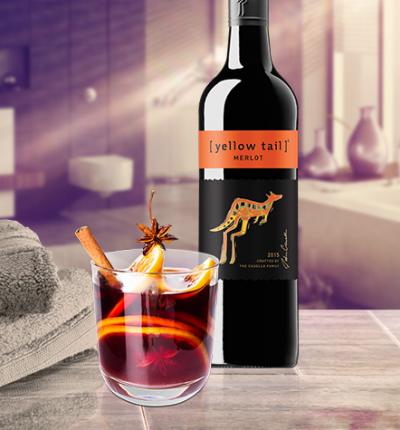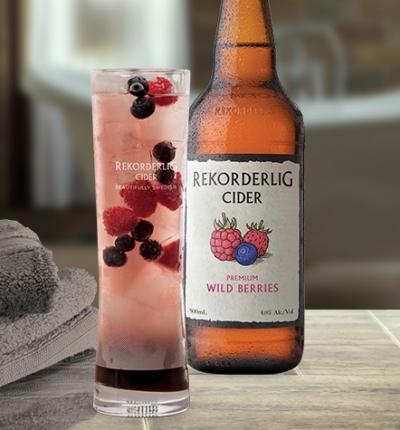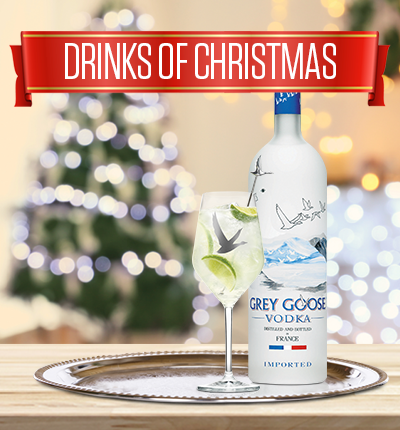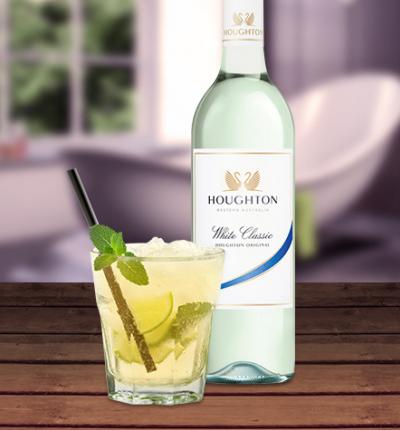You are here
The Alcohol and Cocktail Glassware Guide
The Alcohol and Cocktail Glassware Guide
Alcohol aficionados are usually well enough versed in imbibing to differentiate between similar beverages such as port and sherry, but recognising which type of drinking glass traditionally suits which tipple is not such a widespread skill. That's where our handy glassware guide comes in. We’ll soon have you serving your cocktails and aperitifs with panache at your next dinner party.
WINE GLASS TYPES
Let’s start with the most common dinner party drink: wine. There are numerous glass types to offer guests, but realistically, there’s no need to stock your pantry with more than three basic vessel variations: red wine glasses, white wine glasses, and champagne flutes. While they differ in size and style, each features long stems to prevent your hand from warming up the drink inside.
Red Wine
Typically, red wine glasses benefit from having a more rounded, bigger bowl than their white counterparts, which helps to swirl the beverage with ease to help release the flavours and aromas. For the red wine family, there are specialist glasses suited to all sorts of varietals, from a full-bodied Cabernet to a smoother Burgundy.
White Wine
As white wine is lighter in flavour than its darker counterpart, its glasses need to have a smaller surface area to prevent the liquid inside from aerating and becoming stale. White wine glassware usually comes in slim tulip shapes to prevent the liquid temperature inside from rising at a high rate.
There are such a large number of white varieties that it’s a good idea to choose glasses for the home based on your personal wine preference. If you have a penchant for Chardonnay, for example, you could opt for glasses that are tailored to emphasise the qualities of this medium-dry wine, or if are partial to a crisp Pinot Grigio, there are options to cater to this varietal, too.
Champagne Flutes
Champagne flutes have the smallest rim radius of all these three types of glasses, which prevents sparkling wine from aerating too much and becoming flat.
In addition, the long and slender shape spotlights the rising bubbles for an aesthetically pleasing visual effect. According to Gizmodo, there's usually also a bead etched into the bottom of the glass to provide the bubbles with a single point of nucleation.
For white and champagne glasses, consider chilling them in the fridge before serving your wine to help the beverage retain its crisp coolness.
BASIC COCKTAIL GLASS TYPES
These are the glasses any good-quality bar will have available on their shelves.
The Martini Glass
The most renowned cocktail glass is the martini with its wide rim and reverse cone bowl. Due to its compact size and the fact it opens up so much at the top, the vessel releases aromas to great effect and makes it easier for the drinker to take these in.
Just like the wine glass, the martini glass is produced with a long stem to ensure its contents – which do not usually sit in ice – stay cooler for longer. The V shape also keeps the mixed ingredients from separating.
A well-reported issue, however, is that it's far too easy to tip over or spill a drink when using the martini glass.
The Coupe Glass
Legend has it that the coupe, with its curvy shape, was originally modelled on Marie Antoinette’s breasts. However, this story has been refuted as an urban myth by the fact that the vessel was in existence before the former French queen’s reign. It was first conceived in England in 1663, to be exact, as a container for champagne. However, in modern times, the coupe is considered inappropriate for use with sparkling wine and is more often used for cocktails, such as daiquiris. Coupe glasses are unsuitable for chilled beverages that feature crushed ice as they are too easy to spill.
The Collins Glass
Slightly longer and thinner than the highball, the collins glass is most often utilised for ‘long drinks’ containing ice and a mixer. It's ideal for use with carbonated beverages, just like the champagne glass, as the diameter of the rim is smaller than most vessels, which keeps the drink fizzier for longer.
The collins and the highball can be employed for cocktails such as a Bloody Mary or Long Island Ice Tea. The glass’s namesake, the Tom Collins, made up of soda water, gin, lemon, and sugar syrup, is of course served in this vessel.
The collins and the highball make ideal mocktail glasses, too.
The Old-Fashioned Glass
These short and squat glasses conjure up an image of an elderly brandy drinker by the fire puffing on a cigar, but the old-fashioned glass is far too versatile to be reserved for single-spirit drinks.
In fact, this vessel can be used for everything from a dash of whiskey on the rocks to a Brazilian Caipirinha. The old-fashioned – also referred to as the lowball or a rocks glass – is ideal for cocktails that need ‘muddling’, i.e. which feature ingredients that need crushing and mixing in the bottom of the glass.
Old-fashioned glasses have a pleasantly weighty, oversized feel to them that adds to the cocktail-drinking experience.
SPECIALTY COCKTAIL GLASS TYPES
The more elite cocktail bars - or serious at-home drinkers - will stock these glasses for use with high-end, specialist, or experimental cocktails.
The Irish Coffee Glass
These heat-resistant vessels come with an attached handle and are, of course, particularly suited to serving warm drinks like the Hot Toddy. The small radius of the rim also minimises the risk of the cream sitting at the top of the traditional Irish Coffee from slopping all over the drinker’s lap.
The Sling
There’s something alluring about the sling; a super-long glass. Despite its skinny appearance, it takes as much liquid as a collins, yet seems more sophisticated because of its unique shape. The Singapore Sling traditionally finds its home in these tall vessels, but you can also use it for any highball-style cocktail. It can take cubes of ice despite its slim shape and keeps drinks cooler for longer because of its length.
The Hurricane Glass
This long and curvy glass is really versatile. As it can take a lot of liquid, it is usually used for cocktails such as the Zombie, which features approximately five different liqueurs and is topped up with juice.
These alcohol glasses were invented in New Orleans in the 1940s especially for the Hurricane cocktail. Nowadays, however, they are popular for serving beverages at beach resorts such as the Piña Colada, with its well-loved tropical coconut and pineapple flavors.
The Snifter Glass
The snifter glass falls into the brandy-by-the-fire category, too. It is rather squat and usually has a low stem, allowing the drinker to cradle the glass so as to warm up the contents inside. This glass was not created to fill with ice and as such suits beverages that are drunk neat, including heavier liqueurs, including cognac or whisky. As the rim of the glass tapers inwards and allows the drinker to swirl the alcohol inside around without the risk of spilling it, the scents of the beverage are released at a higher rate for a more aromatic experience. This vessel is also known as a brandy snifter, a cognac glass, or a balloon.






